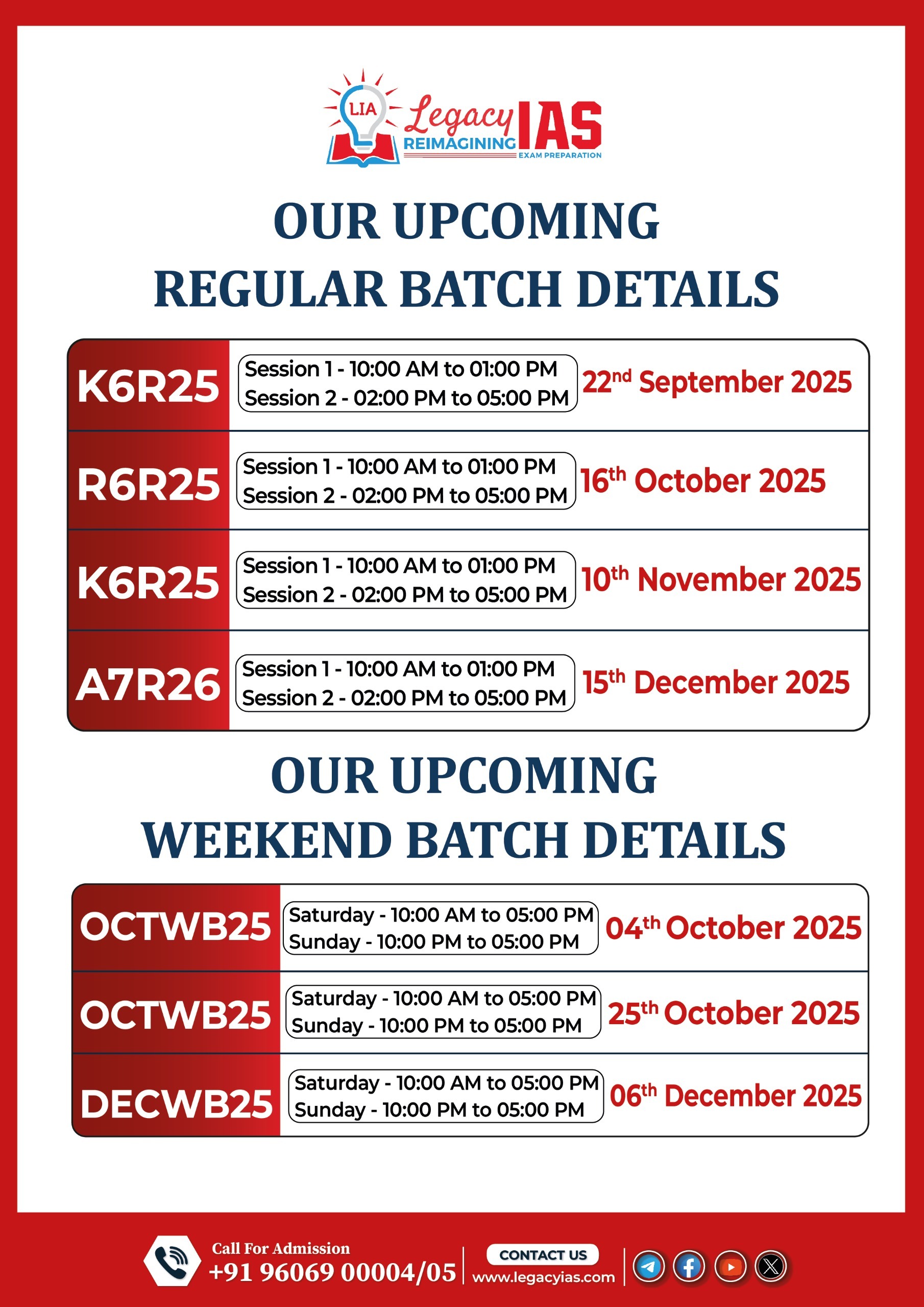Why in News ?
- The 2025 Nobel Prize in Economic Sciences was awarded jointly to Joel Mokyr, Philippe Aghion, and Peter Howitt.
- Awarded for their pioneering research on the role of technological change, creative destruction, and knowledge diffusion in driving long-run economic growth.
Relevance:
GS 3 – Economy & Science–Tech Interface
• Endogenous growth theory – knowledge as capital (Aghion, Howitt)
• Innovation ecosystems and R&D policy in India
• Education, skill development, and inclusive technological diffusion
• Role of AI, automation, and human capital formation
• India’s innovation bottlenecks – inequality, institutional weaknesses
GS 2 – Governance
• Role of State in promoting innovation-led growth (NITI Aayog, NEP 2020)
• Public–private partnerships in research and technology diffusion

About the Laureates
- Joel Mokyr (Northwestern University) – Historian of economics; studied how knowledge, culture, and institutions drive technological progress.
- Philippe Aghion (Collège de France & LSE) and Peter Howitt (Brown University) – Developed the Schumpeterian model of creative destruction, explaining how innovation by new firms disrupts old ones, sustaining productivity growth.
Mokyr’s Model of Knowledge and Growth
- Two Types of Knowledge:
- Propositional knowledge – Theoretical or scientific understanding (“knowing why”).
- Prescriptive knowledge – Practical or technical know-how (“knowing how”).
- Core Idea: Economic growth accelerates when both kinds of knowledge expand and when societies freely share and apply knowledge.
- Social Prerequisite:
Growth thrives where:- Knowledge is accessible to the majority, not monopolised by elites.
- Cultural and institutional norms promote exchange of ideas and open inquiry.
- Key Implication:
Technological progress is not purely economic — it is a social and cultural process shaped by inclusivity and the freedom to learn, share, and apply.
Contemporary Relevance for India
- Caste and Knowledge Restriction:
- Historically, the caste system confined knowledge to a few upper groups.
- Violence and exclusion limited access to education and technical learning.
- Despite reservations post-Independence, access to quality education remains skewed toward the elite.
- Data:
- Only 27% of SC and 16% of ST students access higher education (AISHE 2022).
- Over 60% of rural youth cannot afford private college tuition.
- Implication: Restricting educational access = restricting innovation, as fewer can tinker, experiment, and invent.
Automation and Job Polarisation
- Current Challenge: AI-driven automation reshapes labour markets.
- Job Polarisation: Middle-skill routine jobs decline; growth in low-skill services and high-skill tech roles.
- ILO (2023): Up to 25% of routine jobs globally face automation risk.
- India: Sectors like manufacturing and BPOs most exposed.
- Problem:
- Fewer workers gain hands-on technical knowledge (“prescriptive knowledge”).
- Loss of on-the-job learning limits diffusion of practical know-how.
- Long-term result: decline in innovation potential, even if short-term productivity rises.
Creative Destruction and Economic Growth (Aghion–Howitt Framework)
- Schumpeterian principle: Innovation destroys old technologies and creates new industries.
- Key insight: Sustainable growth depends on continuous innovation, entrepreneurial dynamism, and inclusive knowledge systems.
- Policy takeaway: Growth cannot rely only on markets; it requires education, competition, and R&D ecosystems that allow new ideas to emerge.
Policy Implications for India
- Democratisation of Education:
- Invest in public higher education, not just elite IIT/IIM clusters.
- Implement reservations in private universities or fee subsidies for equity.
- UNESCO (2023): India spends only 2.9% of GDP on education, below global average of 4.4%.
- Bridging Skill Gaps in Automation Era:
- Promote re-skilling programs and technical apprenticeships.
- Incentivise firms to train workers in emerging technologies.
- Breaking Caste Barriers:
- Strengthen social inclusion policies and affirmative educational funding.
- Encourage inter-community innovation networks to broaden idea sharing.
- Encourage Knowledge Ecosystems:
- Link academia–industry–state collaboration.
- Fund open innovation platforms to democratise R&D participation.
- Balanced State Role:
- Neither excessive control nor complete laissez-faire — a “facilitating state” that ensures equal knowledge access.
Key Takeaways
- Knowledge diffusion — not mere accumulation — drives sustained growth.
- Social institutions (like caste) and economic structures (like automation) shape how knowledge circulates.
- Democratizing access to education and technology is essential for inclusive and sustainable economic progress.
- As Mokyr’s thesis suggests, a society with inaccessible knowledge is as stagnant as one with none.



